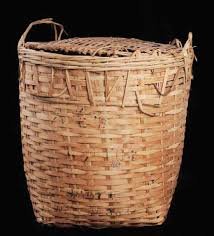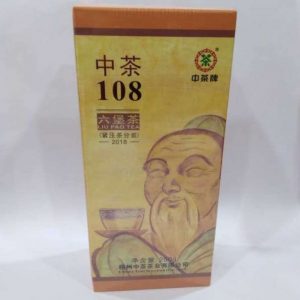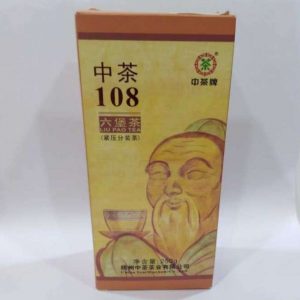
LIU PAO TEA (WUZHOU) CHINA TEA
China Tea (Guangxi) Co., Ltd. (hereinafter referred to as “China Tea in Guangxi”) and its subsidiary China Tea (Wuzhou) Co., Ltd. (hereinafter referred to as “China Tea in Wuzhou”) mainly operate sales business of Liu Pao Tea in Nanning and other areas. China Tea in Wuzhou was established in 2007 as a trade enterprise at the beginning to undertake the domestic sales and export business of Liu Pao Tea from the original Guangxi Wuzhou Tea Import and Export Company. It started running in March 2008, and transformed into a production enterprise in January 2009 so that all the business has been rebuilt according to the mode of production enterprises which has been gradually perfected step by step.
China Tea in Wuzhou was formerly known as Wuzhou Branch of China Tea Corporation which was founded in November 1953, and it was renamed as Wuzhou Office of Guangxi Branch of China Tea Corporation in January 1954. From 1954 to 1988, its name was changed for several times, but it had been engaged in the production and export of Liu Pao Tea. On January 5, 1988, Wuzhou Tea Import and Export Co., Ltd. was formally established. Affiliated to China National Produce and Animal By-products Import and Export Corporation, it has specialized in the production and export of Liu Pao Tea in Guangxi. It can be said that the Liu Pao Tea industry can survive to date, Wuzhou Tea Import and Export Company contributed a lot. The history of Wuzhou Tea Import and Export Company is the epitome of the development history of Liu Pao Tea in China. Today, China Tea in Wuzhou has inherited the glorious tradition of Wuzhou Tea Import and Export Company and will continue to deduce the future of the Liu Pao Tea industry of Guangxi.
Since its establishment, China Tea in Wuzhou has not only become a leading enterprise among the local tea companies, but also made contributions to making Liu Pao Tea go out of China and to the world after the development of more than 60 years.
During its development, although the name and organization of the company have been changed for many times, it has been engaged in the production and export of Liu Pao Tea, without interruption. [ChinaTea Cellared Liu Pao Tea] is the inheritor of the Chinese Liu Pao tea technology, the promoter of the Liu Pao tea culture, and the leader of the Liu Pao tea industry. After more than 60 years of continuous development, [ChinaTea Cellared Liu Pao Tea] has inherited the traditional cellaring process for Liu Pao tea and been exported to Southeast Asia, Japan, Hong Kong, Macao and Taiwan and other regions as popular tea famous overseas. Since 2008, [ChinaTea Cellared Liu Pao Tea] entered into the domestic market with a new attitude. Under COFCO’s strategic guidance of “the whole industry chain”, a strict and complete system has been set up from raw material to product launch. In 2018, China Tea in Wuzhou will set up a new processing plant and put it into operation, to further expand the production scale and move towards a more mechanized, clean, automated and visualized direction. Now, many products of China Tea in Wuzhou have been sold well at home and abroad and are deeply loved by people all over the world.
ITRODUCTION LIU PAO TEA
Liu Bao tea literally called Six Castles tea is a kind of Chinese dark tea, produced in Liu Bao Town of Cangwu County in Guangxi Province.
Liu Bao tea is made from the fresh tea leaves of a special tea tree that is native to Guangxi Province. It is a national Geographical Indicator Product of China.
Liu Bao tea is commonly called “Grandpa and Grandchildren Tea” which means the tea made by grandpa is stored for grandchildren to drink.
The new Liu Bao tea is usually stored and aged for a few years to become more flavorful, so the tea is inherited from generation to generation. The more aged the Liu Bao tea, the more valuable it is, which is like aged wine.
1. History of Liu Bao tea
Liu Bao tea is a famous tea in Chinese history. It has a long history of production, which is said to be over 1,500 years.
In the early Qing Dynasty (1636-1912), Liu Bao tea was already flourished. Later, it was listed as a famous tea due to its special betelnut fragrance.
At that time, almost every family of Liu Bao Town grew tea trees and produced Liu Bao tea. It is a major source of income for the local tea farmers.
In the 19th century, Liu Bao tea was mainly exported to Hong Kong, Macao, and Southeast Asia.
With the outbreak of war in the early 20th century, the production and sales of Liu Bao decreased gradually. After the founding of New China, with the improvement and development of the domestic economy, Liu Bao tea returned to the public again.
In the early 1990s, the producing method of it was separated from the original way. It is from the family workshop to industrial production. Subsequently, the production of Liu Bao tea entered a stable mature period.
In 2011, the State Administration of Quality Supervision and Inspection of China approved the implementation of the protection of geographical indication products for “Liu Bao Tea”.
2. Characteristics of Liu Bao tea
In Liu Bao Town, the tea trees are mostly planted on hillsides or canyons, 3-10km away from the town. There are crisscross streams, beautiful mountains, and fog is all year around.
Because the tea trees are located in the mountain, the water content of them is sufficient. In the afternoon every day, the sun can’t shine to the trees, so the evaporation is less and the leaves are thick and big, with rich nutrients.
“Red, Thick, Mellow, and Aged” is the obvious characteristic of Liu Bao tea. The shape of Liu Bao tea is curled and tight; the color of it is dark and glossy; the color of the tea soup is strong red and bright; its fragrance is similar to that of betelnut or smoking pine; its taste is mellow and meaningful.
Under the right environment, the aged Liu Bao tea will grow a kind of beneficial bacteria called Jin Hua (golden flower), which is called Eurotium cristatum in biology.
This kind of beneficial bacteria can produce a variety of enzymes to catalyze the transformation of various substances in tea, forming a unique color, fragrance, and taste of the tea.
The new Liu Bao tea needs to be stored and aged for a long time to be sold. According to the previous requirements of Liu Bao tea, it took three years for the new tea to reach the standard.
Later, with the improvement of the producing technology and the change of the tea market, the current new Liu Bao tea only needs to be aged for one and a half years or even one year.
Some very expensive Liubao tea has been stored and aged for 30-50 years.
3. Health benefits of Liu Bao tea
The climate of Liu Bao Town is wet and rainy. For hundreds of years, Liu Bao tea has often used in the form of medicine. The local people use Liu Bao tea to treat dysentery and dispel dampness in the body. Up to now, this traditional habit has been maintained.
Scientific experiments have proved that Liu Bao tea contains not only a variety of essentials such as amino acids, vitamins, and trace elements, but also more lipid-decomposing enzymes than other kinds of tea.
Therefore, Liu Bao Tea has a stronger effect of decomposing greasy substances, reducing fat compounds, cholesterol, and triglyceride. Long-term drinking Liu Bao tea can lose weight, improve the stomach and nourish the body.
With the improvement of people’s living standards, Liu Bao tea is more and more popular with consumers.
Here are the main benefits of Liu Bao tea:
Diuretic
Weight loss
Treating dysentery
Relaxing the bowels
Promoting digestion
Dispelling dampness
Supplying nourishment
Prevention of cardiovascular disease
Lowering blood pressure and blood sugar
Etc.
MORE INTRO TO LIU BAO TEA
Liu Bao has always been a black tea ( Hei Cha 黑茶 / Hak Cha ) and traditionally consumed for its medicinal properties. Its traditional production method is a lengthy and delicate procedure involving many steps that includes steaming followed by a controlled wet fermentation process under which the leaves are fully oxidised. The blackened loose tea leaves while still moist are then packed into breathable weaved baskets of typically 30-50 kilos. These huge baskets are stored in a series of dark and damp chambers for long periods up to several years in preparation for consumption.
During the Tin Mining Boom period of the 19th till late 20th Century, British Malaya (modern day Malaysia) was a bustling frontier colony populated by a mass exodus of migrant Chinese coolies who came to work the open tin mines under the harsh tropical heat. At that time, the Kinta Valley was the biggest tin producing region in the World. To survive the harsh climate in the open mines day-in day-out, Chinese workers consumed a lot of black tea to rid the heatiness from their body. As a matter of survival, it was therefore customary that their employers guarantee a free flow supply of black tea when hiring. Hence large quantities of Liu Bao were imported to Malaya to sustain the colonies of Chinese tin mine workers. However in the advent of the Tin Market Crash of the 1980s, the price of tin collapsed resulting in the drastic decline of tin mining activity in the region. That crisis didn’t just affect the global economy, the fall in the value of tin had caused an oversupply of black tea that left huge accumulating stockpiles of Liu Bao in storage for decades due to the sudden drop in consumption.
To give you some context, in the 1980s people were just drinking Liu Bao for its medicinal effects as it was necessary for their survival in the hot climate. It wasn’t a particularly nice drink to have, nor did anyone intend to store this medicinal tea for long periods of time past its useful date. In fact at the time, Liu Bao was more widely known in Malaysia as Da Ye ( 大叶 / Dai Yip ) meaning ‘big leaf’ indicating the lower grade with wider leaves of the tea that is mainly consumed by the lower working classes, it became a cheap tea that people wanted to dispose of. Furthermore, as formerly vibrant towns stagnate and economic conditions turned austere, businesses tried to skimp on anything to save on expenses. Many Chinese communities in South East Asia having lived through this period will recall stories of restaurants and coffee shops notorious for serving tea from ‘used tea leaves’ that are recycled again and again after adding some colouring and drying under the Sun. If you mention Dai Yip to an uncle or aunty from that generation, they will likely recall with disgust of that fake tea with artificial colouring, yuck! That explains the sentiment of why Liu Bao is perceived to be inferior from other teas. Liu Bao and Dai Yip are the same tea, and that is part of its history in that period.
Ironically, it was in the 90s that tea enthusiasts accidentally discovered that some old Liu Bao that were stored long past their useful dates are in fact still drinkable, and are even improved with age. It is a stroke of luck that a significant yet finite volume of decades-old Liu Bao lost in time has matured very desirably in the tropical Malaysian climate that is consistently hot and humid, especially in towns like Taiping (太平) and Ipoh ( Yi Bao 怡保 / Yee Bou ) where the conditions are most conducive for the extended ageing process of Liu Bao. Today, aged Liu Bao from the 50s up to the 90s are sought after as rare items by tea collectors.
That was a brief summary of how Liu Bao found it’s way to Malaysia and reached its current standing. I must admit that wasn’t a very short summary at all. So how does Pu Er relate with this timeline and why are we comparing the two teas? The common thing between the two is that both Liu Bao and Pu Er are widely recognised as black tea (黑茶), that means they are both 100% oxidised after the fermentation process. An oxidised tea is considered a Shou Cha ( 熟茶 / Suk Cha ) literally meaning ‘ripe or matured tea’. On the other hand, a raw tea is considered Sheng Cha ( 生茶 / Sang Cha ) which means it hasn’t gone through the fermentation process. Raw tea leaves are typically green and have not turned black from oxidation. Some teas can also be partially raw and partially oxidised. Teas that are partially oxidised but at a lesser extent are Pian Sheng ( 偏生 / Piin Sang ) which is typical for teas of lighter liquor. While teas that are oxidised further are Pian Shou ( 偏熟 / Piin Suk ) with their typical darker liquor.
Unlike Liu Bao which has always been produced as an oxidised tea ( Shou Cha 熟茶 ), Pu Er was traditionally a raw tea ( Sheng Cha 生茶) until the 70s. Raw Pu Er being too young and astringent cannot be consumed immediately and need to be put aside for years to ripen. In the 1970s, the Chinese government was looking for ways to accelerate the production of Pu Er to meet increasing overseas demand for black tea while at the same time skipping some of the time consuming steps that were used in traditional production of Liu Bao. It wasn’t until 1974 through imitating and simplifying the traditional wet fermentation processes of producing its Liu Bao predecesor that they successfully pioneered the first Pu Er black tea for the export market that is suitable for immediate consumption.
Unlike the traditional loose tea leaves in 50 kilo baskets typical of Liu Bao, the standard for Pu Er is a stack of seven x 357g compressed tea cakes ( Cha Bing 茶饼 / Cha Beng ) wrapped in a bundled unit called a tong. Coming from two different regions, these different packing methods reflect the respective origins of these two teas. However, both methods allow the tea to breathe, the permeable basket of Liu Bao is placed in a hessian bag, while the Pu Er tea cake is wrapped in paper and wrapped in bundles using dried leaves. both provides a sufficient level of protection while enabling natural ventilation to help the tea develop further with age.
When comparing between Liu Bao and Pu Er, we can only compare one black tea to another black tea. So we shall disregard raw Pu Er for now, as it is an entirely different product. Following the low years that Liu Bao has been through and the lack of any strong interest from the 80s up to recent years, the new kid Pu Er has steadily climbed up in popularity with strong backing from certain tea industry circles and even hit a peak in 2008 when the soaring prices of the most expensive Pu Er reached its potential. In the meantime during the early 2010s, Liu Bao still remained obscure only trailing Pu Er in its mainstream recognition. As most old Liu Bao from the 40s all the way to the late 90s stuck to their intricate and more time-consuming traditional processing methods, the quality of these Liu Bao black tea are actually more superior than their Pu Er successors. But now the price gap is disproportionate with Liu Bao being undervalued and Pu Er hovering at sky high prices that are overrated in comparison. There is only one direction to go from here.
The price gap is not the only factor supporting this correction. Over recent decades, like many Chinese products made for the export market in the age of a rising China, production of Liu Bao has gradually undergone a revamp to eliminate labour and time intensive steps to pave the way for mass production in higher volumes of output. Up to the mid 2010s, newer batches of Liu Bao despite having deteriorated drastically from their earlier batches, it was still possible to find pure batches of tea untainted by chemicals and pesticides. Past the mid 2010s, it became almost impossible to find any tea worth drinking. The reality is that China has stopped producing and is now no longer able to produce the same quality of tea it once did half a century ago. Once the land is tainted with pesticides, the tea is no longer worth anything to the serious collector.
For collectors, it is now time to acquire whatever old tea is left from past decades. Every gram of premium Liu Bao tea is a historical relic, and what is left now is all that is left.
-
ABTLP42 Wuzhou Liu-Pao Black Tea (150g) 1st Grade Year 2013 (2nd Batch-2017)
RM 85.00Total Weight is 263g












